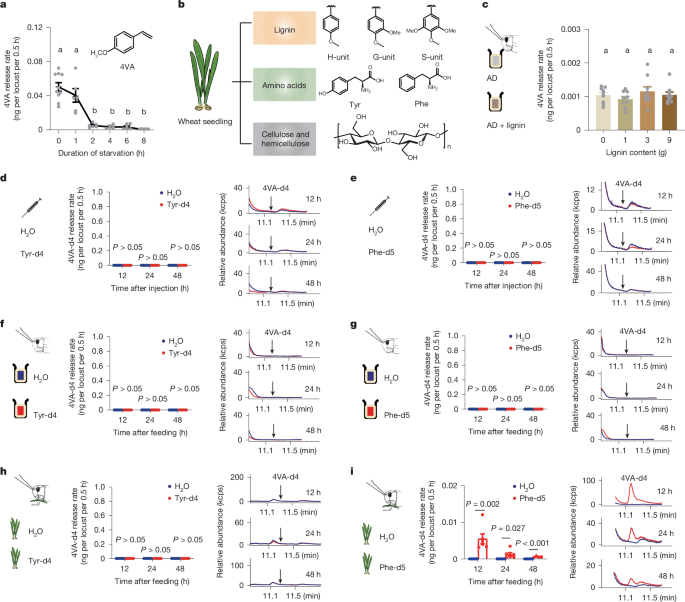
"The study explores the effects of social behavior on volatile emissions in locusts, highlighting the contrasting responses of gregarious and solitary individuals to starvation."
"This research demonstrates that both gregarious and solitary locusts exhibit unique volatile profiles, indicating that social context can significantly influence chemical signaling."
"Through precise SPME and GC-MS methods, the study quantifies 4VA emissions, revealing important insights into the adaptation and survival strategies of locusts."
"By maintaining locusts in controlled environments for generations, the researchers established reliable conditions to investigate biochemical responses related to their social behavior."
The article investigates the influence of social behavior on volatile emissions from gregarious and solitary locusts (L. migratoria). The study examines how starvation affects the release of 4-vinyl-1-cyclohexene (4VA) by analyzing locusts raised in controlled environments. Gregarious locusts are kept in larger groups, while solitary ones are isolated. Using solid phase microextraction (SPME) and gas chromatography-mass spectrometry (GC-MS), the researchers measured the volatiles emitted during different starvation durations. Results revealed that the social context alters locusts' chemical signaling, contributing to a better understanding of their survival mechanisms.
Read at Nature
Unable to calculate read time
Collection
[
|
...
]